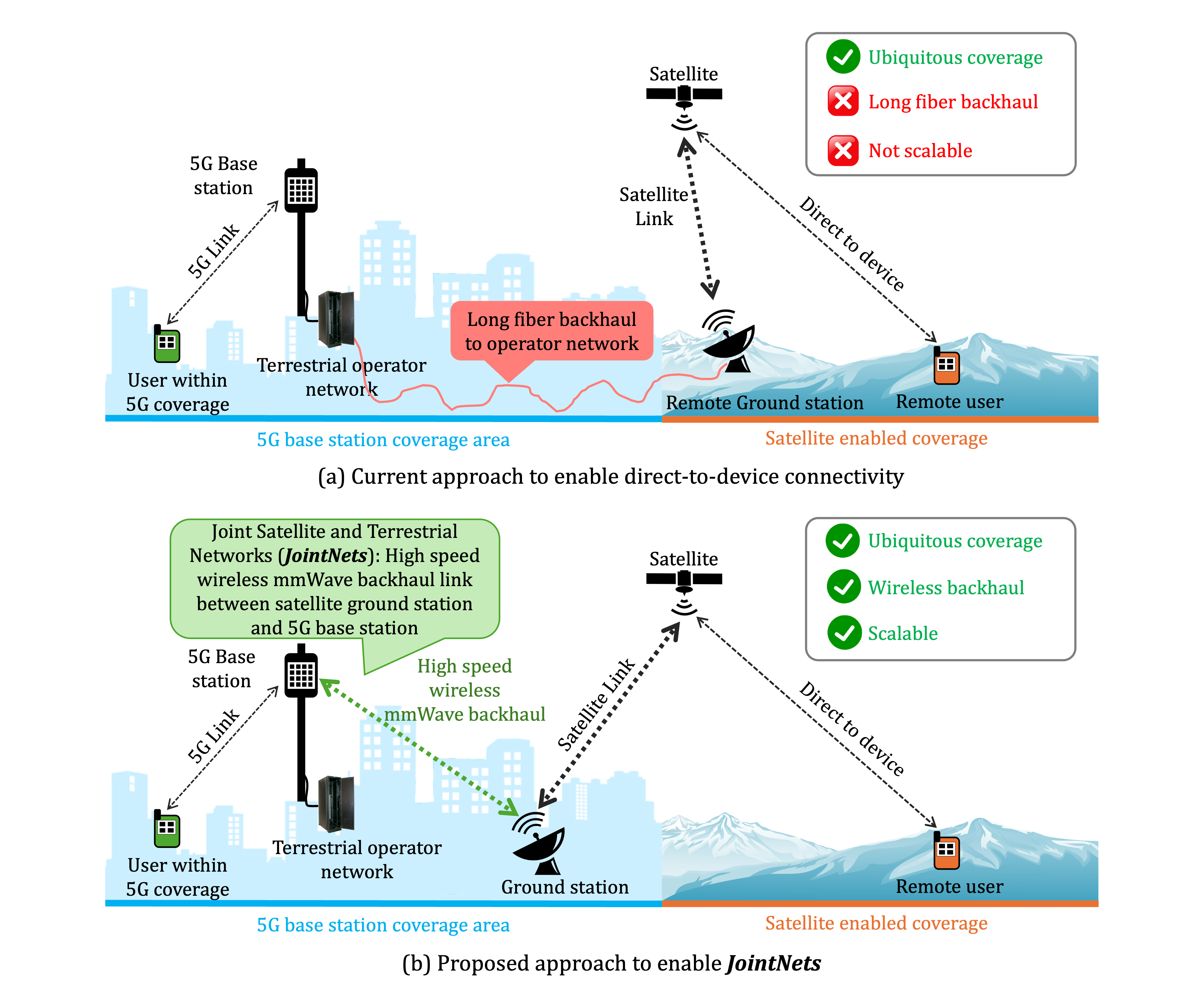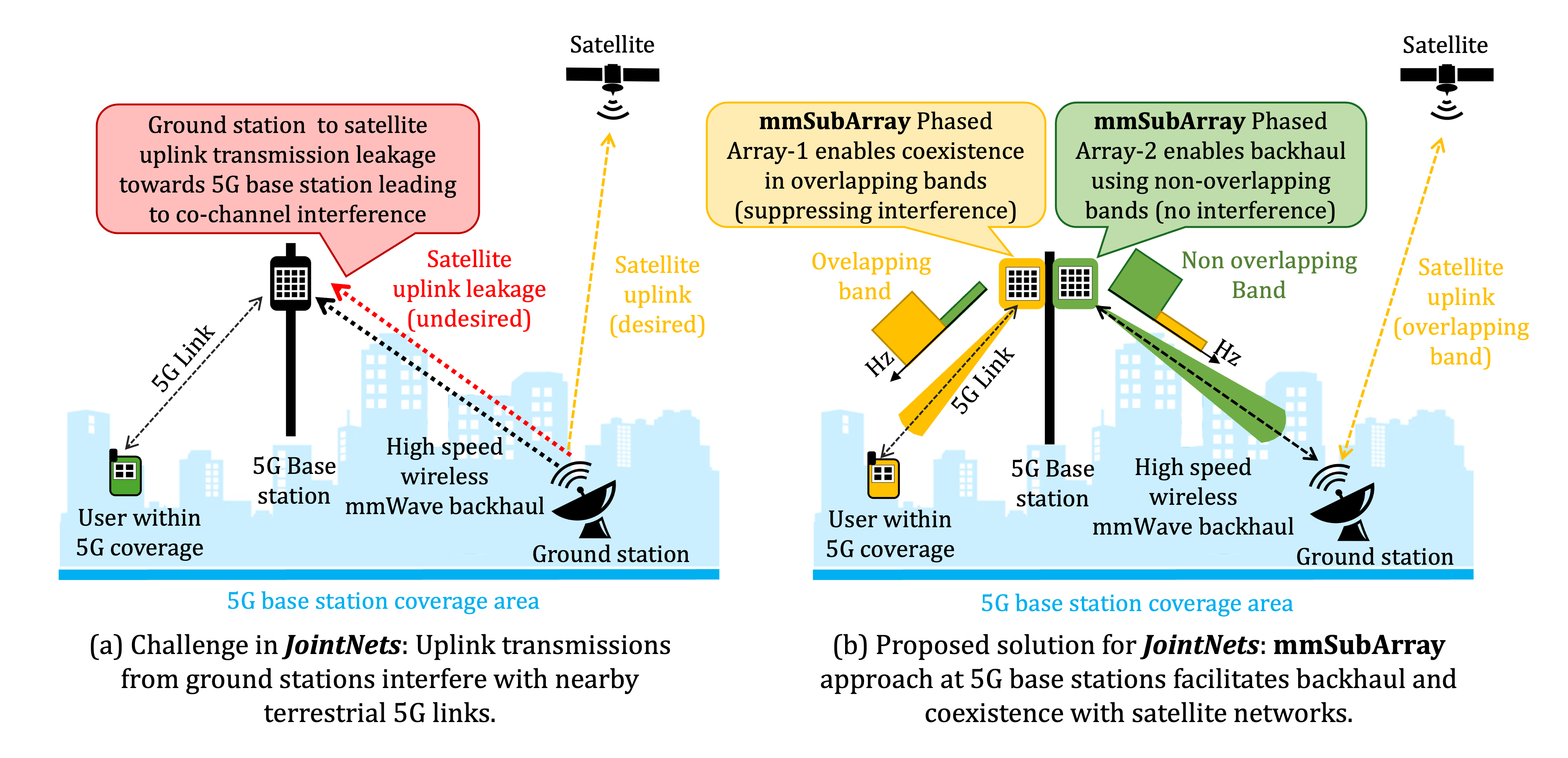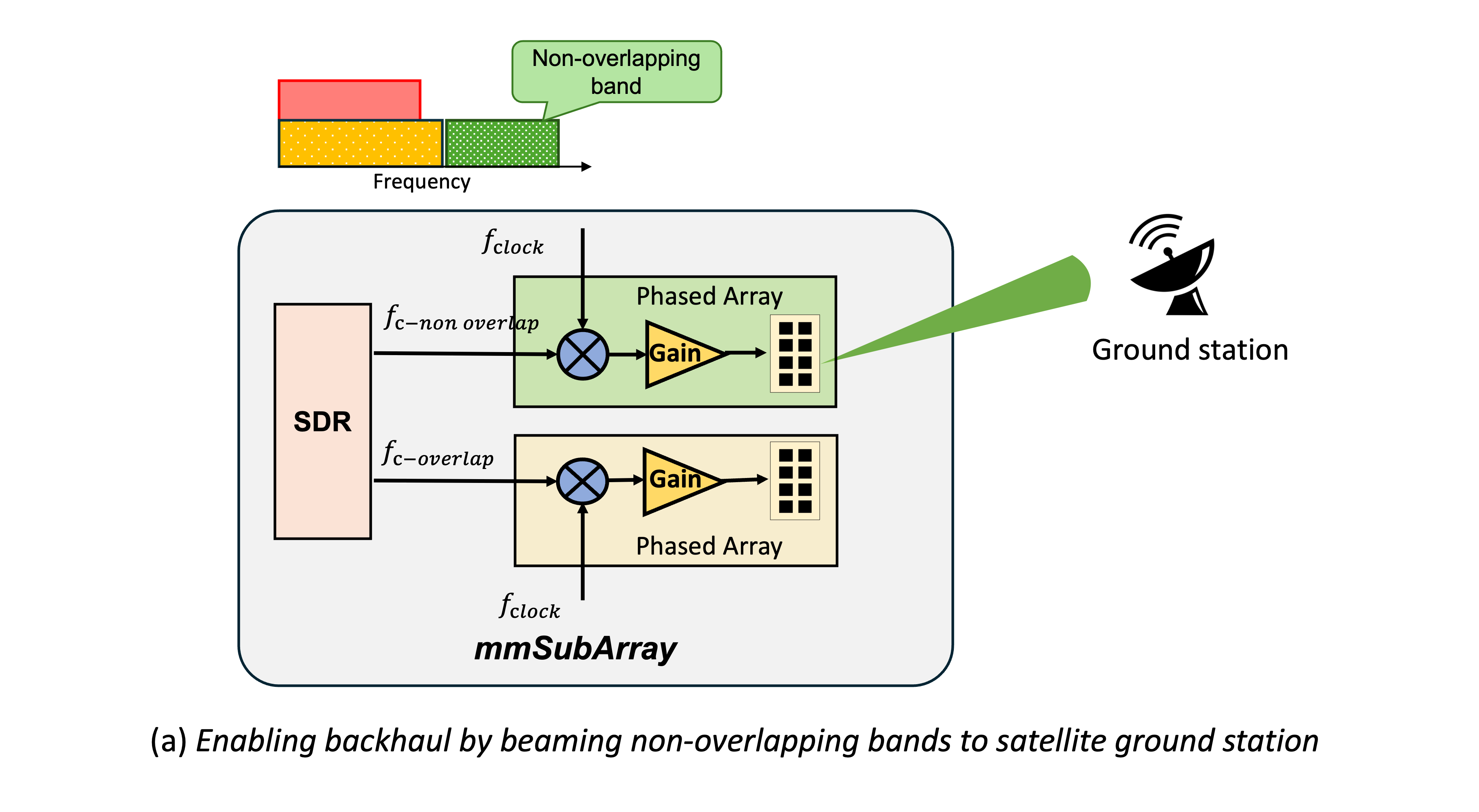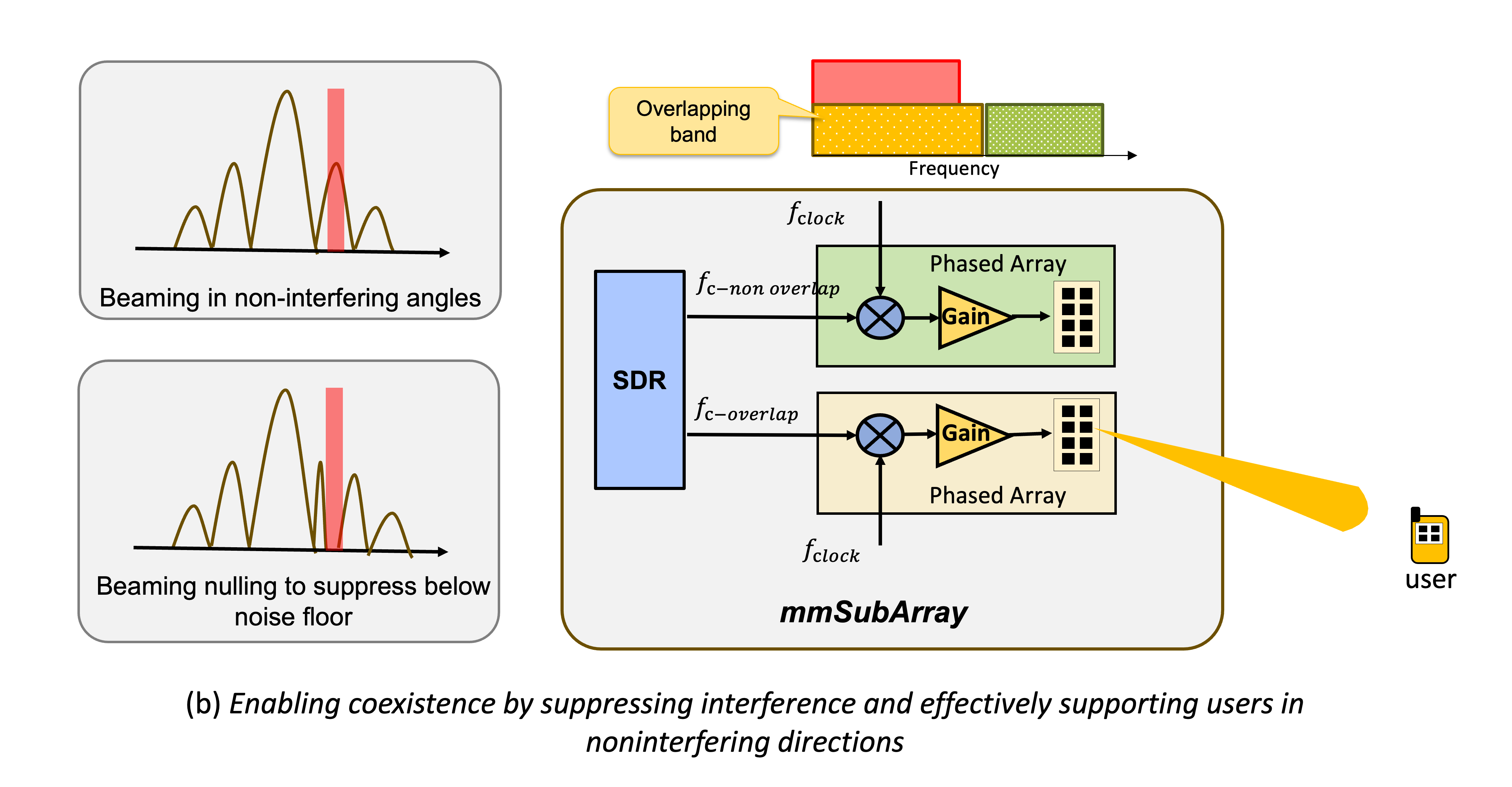The future of global connectivity depends on the seamless integration of satellite and terrestrial networks. Satellites and ground stations can now relay data between terrestrial base stations and remote devices, breaking coverage barriers and enabling global connectivity. However, current satellite-to-device architectures require ground stations with extensive fiber backhaul across difficult terrain, leading to high deployment costs, scalability challenges, and increased latency. To address this, we propose JointNets: Joint satellite and terrestrial networks by deploying ground stations within terrestrial coverage areas and using high-speed millimeter-wave links for backhaul. This eliminates the need for long optical fibers, simplifies ground station deployment, enhances scalability, and reduces latency.

A major challenge in enabling JointNets is that ground station to satellite uplink transmissions (27.5 to 30.0 GHz) interfere with 5G links, leading to reduced efficiency or complete link failure. Current approches, such as distance, frequency, and direction separation, often cause spectrum inefficiency and coverage gaps. This paper introduces mmSubArray: An array of sub-band phased arrays using commercial off-the-shelf phased arrays to enable full-spectrum utilization and joint satellite-terrestrial networks. Our mmSubArray approach splits the bandwidth into overlapping and non-overlapping subbands, with different phased arrays beaming each subband at the base station.

Enabling Backhaul: Using commercial phased arrays, we demonstrate that simultaneous mmWave transmissions in non-overlapping bands do not suffer significant degradation due to interference. mmSubArray employs one or more phased arrays to beam non-overlapping bands toward interfering ground stations. This allows mmSubArray to enable backhaul for ground stations or support users in interfering directions.

Enabling Coexistence: In the overlapping band, we use the other phased arrays to serve users in non-interfering directions. However, simply beaming in other directions is not sufficient to enable coexistence in many scenarios. We may still have side lobes that fall along the interference directions, causing interference issues. Our key idea is to apply nulling along with beaming in other directions; together, these techniques suppress the interference power below the noise floor and enable coexistence in overlapping bands. Through extensive simulations and real-world measurements, we demonstrate the interference challenges and evaluate the efficacy of our approach.

|
|